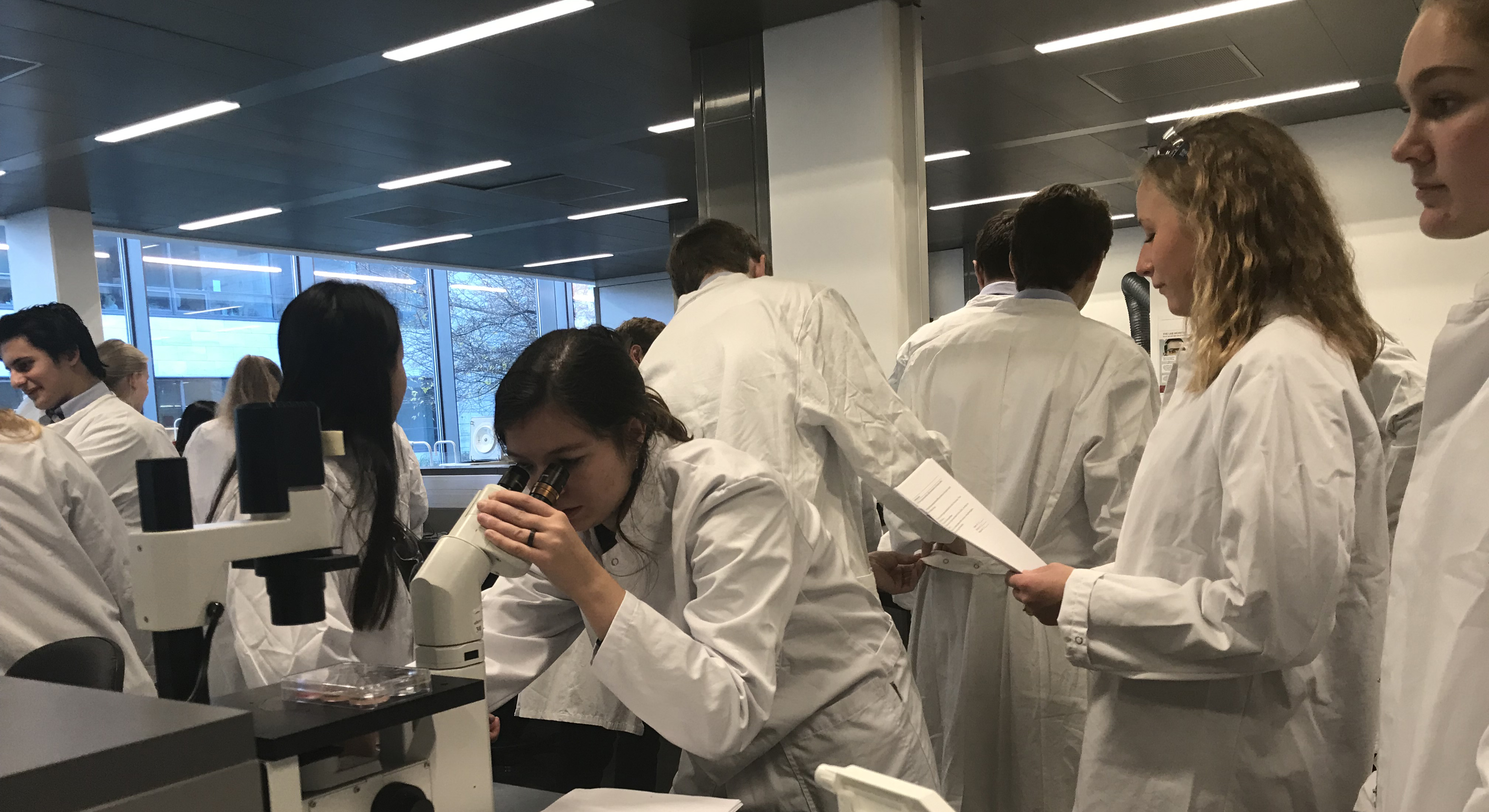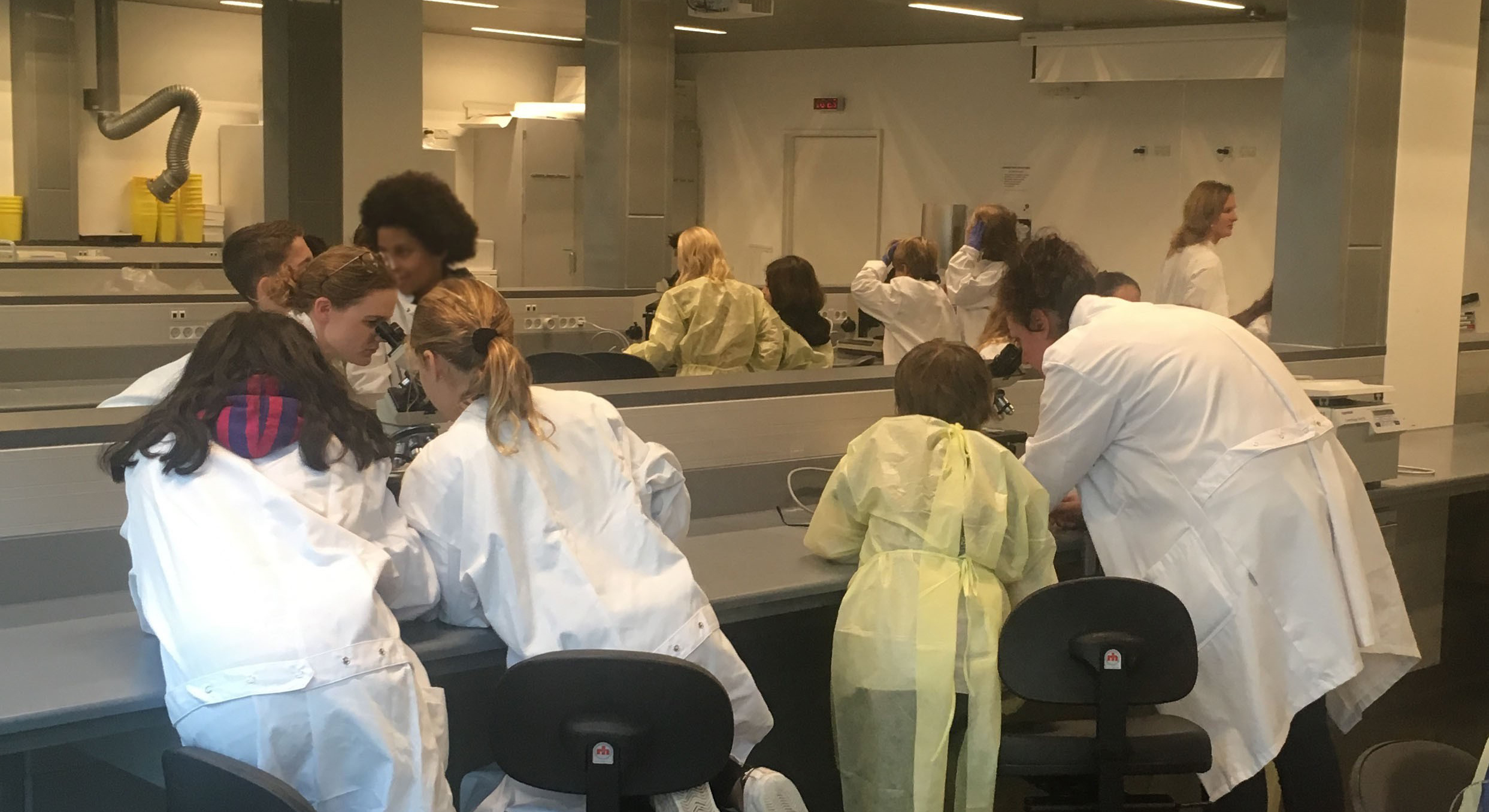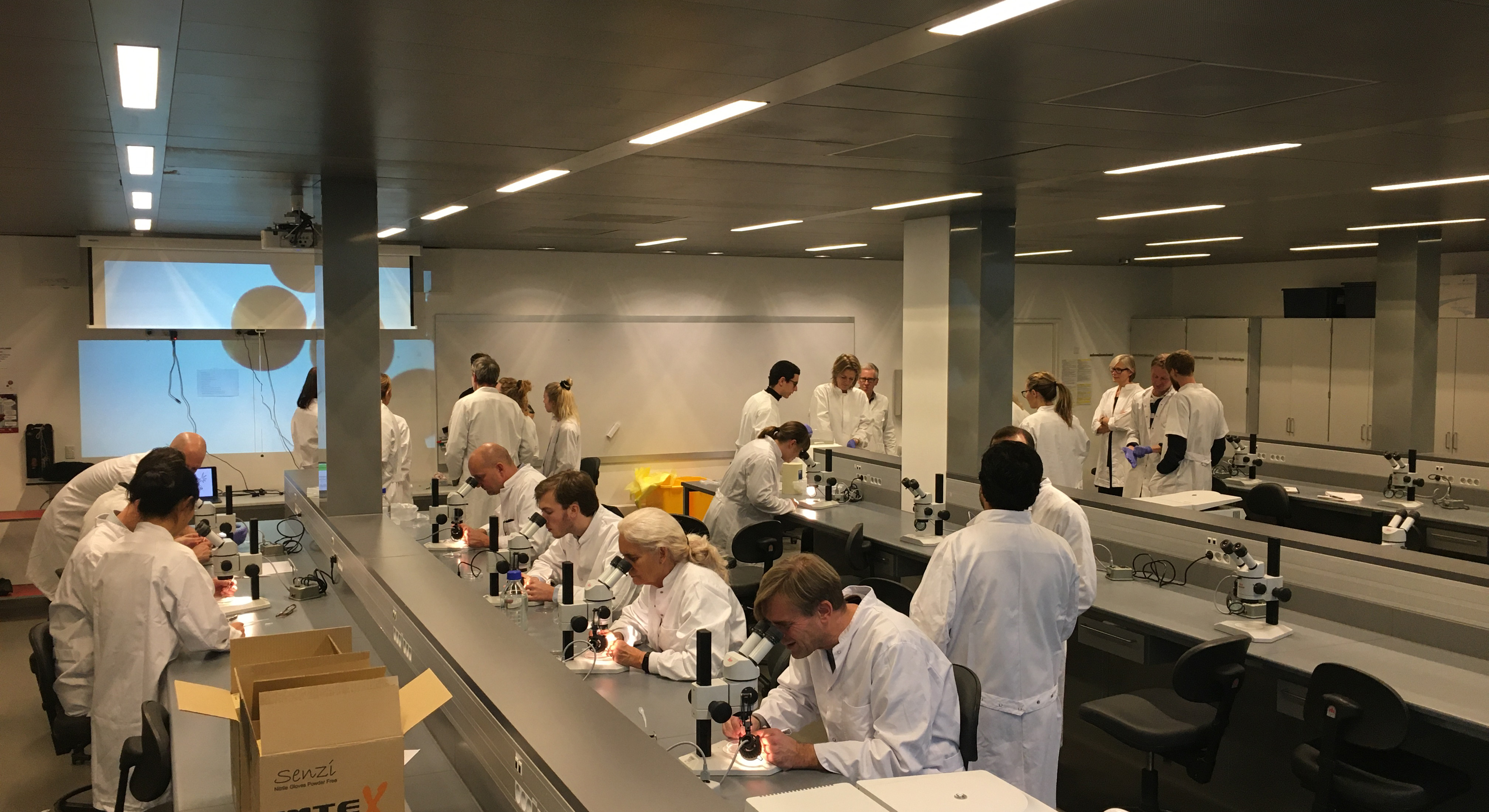Communicating the importance of basic research through outreach
Basic research is crucial for the continuous development of new treatments of serious diseases. However, basic research is a complex matter, dependent on modern laboratory equipment and highly educated researchers. This may cause a gap between the public and the basic research, making students below PhD level unaware of the impact, effects and importance of basic research. In the last week, BRIC especially tried to bridge this gap by inviting students and high school teachers into the labs.
The visitors included 6th graders studying tissue and cells, high school students learning about epigenetics and high school teachers getting tips on how to include stem cells in their teaching. All outreach events were designed and undertaken by dedicated researchers from BRIC and Danstem.
How does a cell remember? Epigenetics workshop for high school students
On 11 and 12 November, 60 high school students visited BRIC for a workshop on epigenetics.
The workshop was designed by Alva Biran (Groth) and Paul Cloos (Helin) and included cell type identification, distinguishing stem cells and differentiated cells by alkaline phosphatase staining and analysis of nucleosome density by Mnase digestion. A dedicated group of instructors from BRIC assisted the students in the lab and answered questions about science and life as a researcher.
The workshops were part of the Life Science Talent Programme which BRIC has launched at two Danish high schools in collaboration with American pharmaceutical company Bristol-Myers Squibb (BMS), Faculty of Health and Medicinal sciences, UCPH and Fonden for Entreprenørskab.
Team:
Alva Biran, Paul Cloos, Simona Graziano, Sebastian Peter Gnosa,, Sophia Engelhard, Dominik Böhm, Eduardo Ferreira Martins Dias, Laia Puig Blasco, Krzysztof Bartlomiej Piotrowski,
Anne Rahbek-Damm (coordinator)

Science4children
On 14 November, the Science4Children initiative led by Emilie Tresse-Gommeaux (Issazadeh-Navikas) welcomed in 48 school students from 6th grade from Rygaards International School, who engaged in a number of science exercises in the lab. The exercises included: degradation of starch by salivary amylase observed using iodine staining, introduction to microscopy by mounting slides - from onions- and observing different tissues (lungs, brains, intestines), and Live microscopy by preparing live organisms from grass and mud and observing them using inverted microscopes.
Besides the exercises the students were given a tour of BRIC and had a special session with the confocal microscope, looking at tumour invasion in zebrafish, skin tissue in 3D and mitochondria in 3D.
Team:
Emilie Tresse-Gommeaux , Teresa Eichenlaub, Simona Graziano, Erika Villanueva, Charanya Venkatesh, Maria Rafaeva, Sebastian Gnosa and Navneet Vasistha.

Stem cells – the key to healthy organs – inspiration day for high school science teachers
On 15 November, 25 high school science teachers spent the day at BRIC gathering inspiration on stem cell teaching. The workshop was a joined effort by BRIC and DanStem and the inspiration day included both a general introduction to stem cell research by Agnete Kirkeby (Danstem) and 3 short workshops. First, researchers from Jensen lab, led by Marianne Tendrup Pedersen illustrated how intestines can be used as a model to understand the importance of stem cells for an organ to function properly. The participants looked at intestinal pieces under a microscope, investigated what happens if the intestinal structure is destroyed, isolated intestinal cells and put them into culture. Finally, through a short film, the participants were shown how stem cells can be grown and used as living patches in the gut. In another workshop led by Jakub Sedzinski (Danstem) and lab members from Danstem, the participants were given a brief introduction to how and why, Xenopus laevis is a suitable animal model for studying chronic respiratory disorders. The participants were given the chance to manage Xenopus frogs, handle and manipulating embryos with micro-injections and to use stereomicroscopy for scoring phenotypes, analyzing data, etc.
Finally group leader Agnete Kirkeby from Danstem led a workshop on ethics where the participants discussed ethical dilemmas concerning stem cell research and the use of stem cell treatments.
Team
BRIC: Marianne Terndrup Pedersen, Jordi Guiu, Ditte Lynge Clement, Maria Antfolk, Astrid Møller Baattrup, Teresa Maria Eichenlaub, Stine Lind Hansen, Hjalte List Larsen, Grzegorz Jerzy Maciag, Sviatlana Ulyanchanka, Kata Krizic
Anne Rahbek-Damm (coordinator)
Danstem:
Agnete Kirkeby, Jakub Sedzinski, Guilherme Bastos Ventura, Raghavan Thiagarajan, William Hamilton, Paul Riccio, Dror Sever, Julie Lee
Mette Christine Jørgensen (coordinator)

